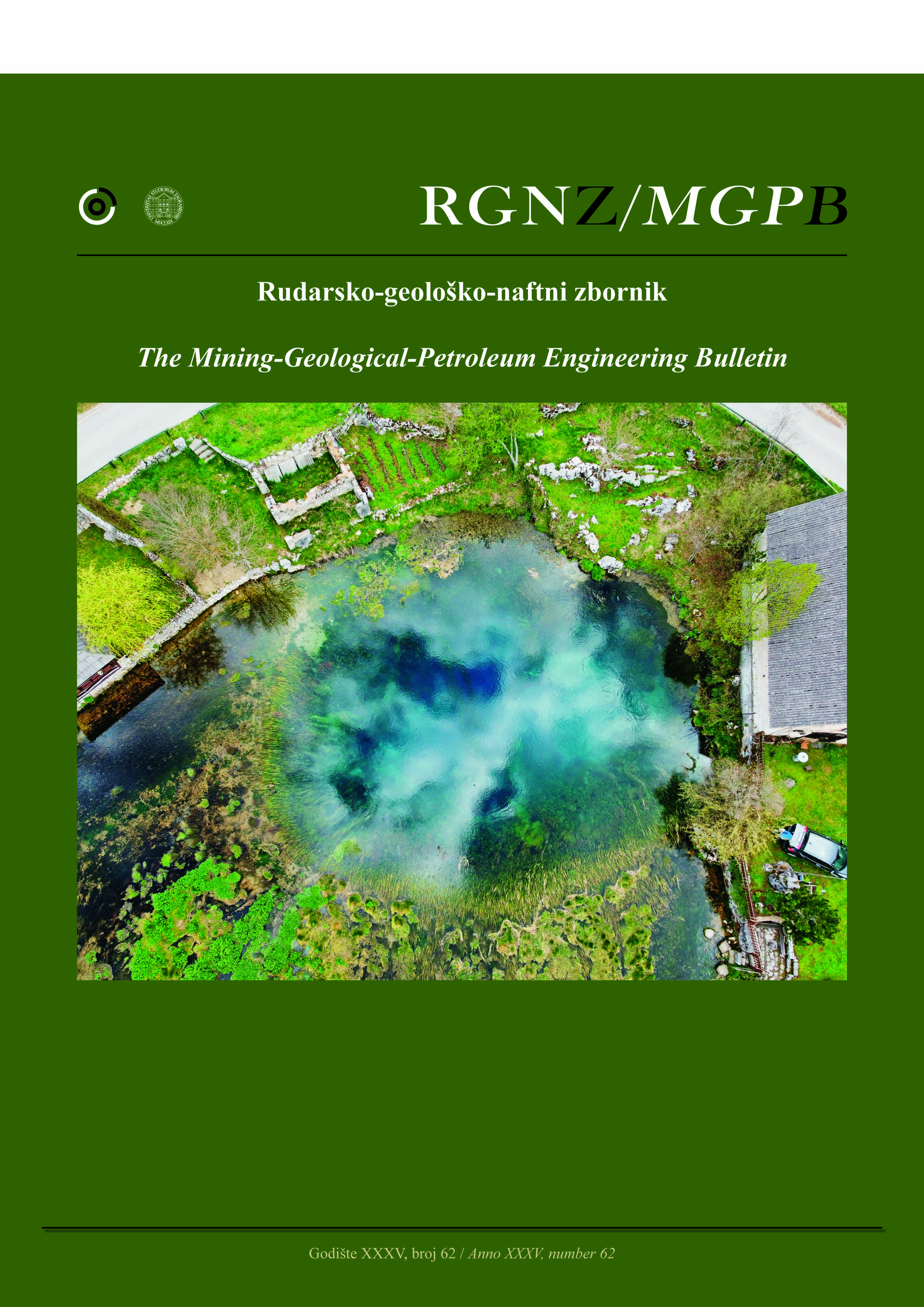Effects of various grinding aids dosage on comminution efficiency and cement characteristics
DOI:
https://doi.org/10.17794/rgn.2023.1.7Keywords:
Blaine number, Compressive strength, Grinding aid, Comminution efficiency, Cement, ConcreteAbstract
Grinding aids are materials that are added to cement mixtures to improve the characteristics of the cement or increase the efficiency of the milling systems or both in the clinker grinding (finish grinding) stage. In this study, the effects of four grinding aids (Triisopropanolamine based (TIPA), Triethanolamine based (TEA), Hydroxylamine based (HA), and Calcium nitrate based (CN) grinding aids) in the clinker grinding process were evaluated on the essential characteristics of the produced cement: namely specific surface area (Blaine number), compressive strength of concrete, and the comminution efficiency-retention time (energy saving) at four different dosage levels. In the first step, the grinding time required to reach the Blaine number of the investigated Cement type (S-OPC: Studied Ordinary Portland Cement) was obtained as 69.75 minutes by kinetic grinding tests. Afterward, 17 laboratory-scale grinding tests were performed utilizing S-OPC cement and four grinding aids at four different doses of 0.02%, 0.05%, 0.08% and 0.11 %. The results indicated that the TIPA-0.11 (Triisopropylamine compound at a dosage level of 0.11%), with a Blaine value of 4069 cm2/g, and grinding efficiency of 19%, had the most significant effect on the fineness and comminution efficiency. Furthermore, the concrete samples produced from all the grinding aids were tested for their compressive strength at 2, 7, and 28 days. The results showed that compared to control samples, the highest growth of compressive strength were on day 2 and 7 for TIPA-0.11 samples with values of 37.08% and 32.44%, respectively. Meanwhile, the highest increase of compressive strength was after 28 days for TIPA-0.11 samples with a 22.14% increase.
Downloads
Published
How to Cite
Issue
Section
License
Copyright (c) 2023 authors

This work is licensed under a Creative Commons Attribution 4.0 International License.
Creative Commons-BY
Authors who publish with this journal agree to the following terms:
In agreeing this form, you certify that:
- You read the ethical codex of the RGN zbornik available at journal web.
- You submitted work is your original work, and has not previously been published and does not include any form of plagiarism.
- You own copyright in the submitted work, and are therefore permitted to assign the licence to publish to RGN zbornik.
- Your submitted work contains no violation of any existing copyright or other third party right or any material of an obscene, libellous or otherwise unlawful nature.
- You have obtained permission for and acknowledged the source of any illustrations, diagrams or other material included in the work of which you are not the copyright owner.
- You have taken due care to ensure the accuracy of the work, and that, to the best of your knowledge, there are no false statements made within it.
- All co-authors of this submitted work are aware of, and in agreement with, the terms of this licence and that the submitted manuscript has been approved by these authors.
Publication licence
You retain copyright in your submitted work, according to journal license policy (CC-BY). By signing this form you agree that RGN zbornik may publish it under the publication licence. In summary the licence allows the following:
Anyone is free:
- To copy, distribute, display, and perform the work.
- To make derivative works.
Under the following conditions:
- The original author must always be given credit.
- The work may not be used for commercial purposes.
- If the work is altered, transformed, or built upon, the resulting work may only be distributed under a licence identical to this one.
Exceptions to the licence
In addition to publishing the work printed under the above licence, RGN zbornik will also enable the work to be visible online.
The journal editorial can change the licence rules anytime but it cannot retroactively restrict author(s) rights.


